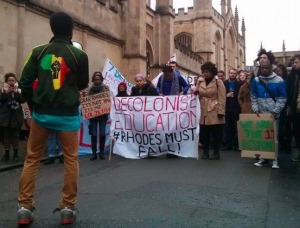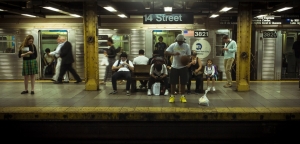As a student, I’ve always enjoyed reading and dissecting theory. Abstract concepts of power, race, and gender always interested me, and I enjoy coming up with creative interpretations of their inter-relationships.
But talking isn’t enough. To enact social change, I must be willing to practice theory on the ground. So I’ve tried to get moving, to put what I’ve read about into action. As years of messy practice have shown, practical application is much more difficult than mere theory. I make mistakes, I feel uncomfortable, and I often just want to retreat back into theory.
I’ve developed a metaphor for my attempts to pursue social justice. Theory is like English- it’s my native language, it’s familiar, and it’s much easier for me to implement. On the other hand, practice is like Spanish. I learned it later in life, and because the sounds and words did not embed themselves in my brain as a child, they come much more slowly to mind. I will never be fully fluent, nor as confident in Spanish.
But Spanish (and practice) are a necessary component of social justice work. They stretch my mind, add to my vocabulary, and guarantee that I am not too comfortable. They remind me of my limits, and open up larger segments of the population to me. I’m able to meet people where they are, to speak their language rather than forcing them to speak mine. It’s a small way I try to right the very unequal power dynamics between Spanish and English speakers. When non-native speakers make mistakes in English, they are looked down upon, derided. But when I speak Spanish, even though I’m far from fluent, I am complimented. My attempts are praised, and my learning Spanish is seen as going the extra mile, while speaking perfect English is considered a requisite for anyone living in the United States.
Of course, pursuing justice is a lofty goal. Those who attempt to bring about justice either get overwhelmed by the impossible task, or become consumed by their own accomplishments. It’s hard to strike a balance between giving up and becoming prideful. Even though I can’t save the world, I need to at least try to ensure to mitigate the negative effects I evoke by doing nothing. Just by being on this planet, I am creating a carbon footprint. By living my relatively privileged life, I am abetting systems that perpetuate racism. By seeking my own satisfaction, I am depriving others of resources. To counter these realities, the best I can hope to do is to impact one little corner of the world as best I can.
Audre Lorde, a Black Lesbian Feminist scholar, emphasizes the potential positive uses for anger. She writes, “Anger expressed and translated into action in the service of our vision and our future is a liberating and strengthening act of clarification” (Sister Outsider, 127). For people of color, anger is often their only weapon against the oppression they experience daily.
Whether through speaking Spanish, pursuing action, or expressing anger, practical implementation is the enactment of true commitment to social justice.
By Anna Lindner
Anna is a Campus Clipper intern and a first-year Master’s student in NYU’s Media, Culture, and Communication program. Her research interests include critical race and gender theory and their resultant intersectionality. When she’s not studying, Anna enjoys visiting friends, catching up on TV shows, and lifting weights. For over 20 years, the Campus Clipper has been offering awesome student discounts in NYC, from the East Side to Greenwich Village. Along with inspiration, the company offers students a special coupon booklet and the Official Student Guide, which encourage them to discover new places in the city and save money on food, clothing and services.
At the Campus Clipper, not only do we help our interns learn new skills, make money, and create wonderful e-books; we give them a platform to teach others. Check our website for more student savings.



